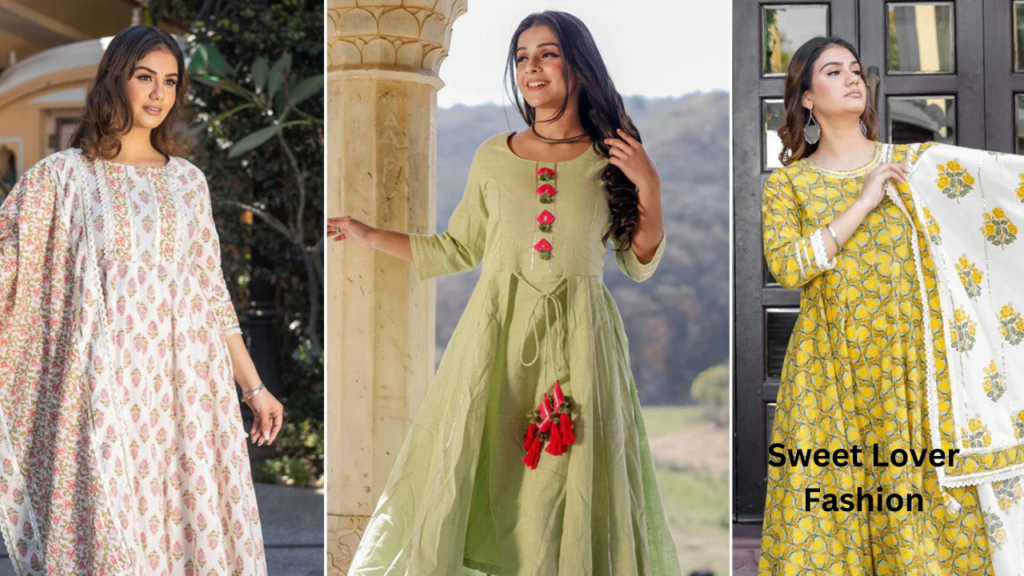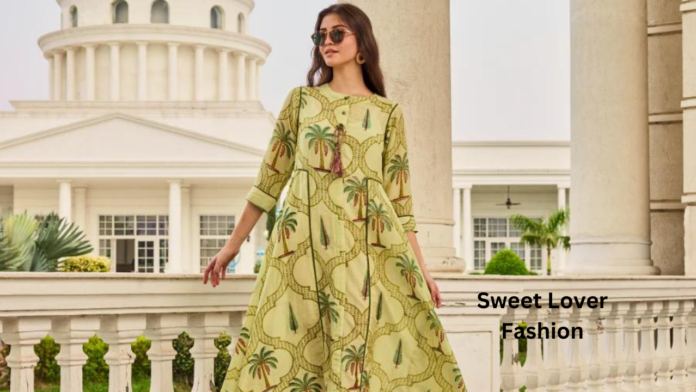Indian fashion has always held a unique charm with its intricate designs, vibrant colors, and deep-rooted cultural significance. Whether it’s a wedding, festival, or even a casual day at the office, Indian wear dresses have a timeless appeal that can elevate your wardrobe to new heights. In this comprehensive guide, we’ll explore the world of Indian ethnic wear, from classic styles to modern trends, to help you effortlessly add sophistication and grace to your wardrobe.
The Rich History of Indian Wear
Indian wear has a long, rich history that has evolved through the centuries. Influenced by dynasties, empires, and various cultures, Indian wear dresses tell stories through their fabrics, cuts, and embellishments. From the Mughal era’s royal designs to the vibrant tribal wear of Rajasthan, each region contributes to the vast diversity of Indian attire. These dresses have continued to evolve, embracing modern elements while staying true to their traditional roots.
Types of Indian Wear Dresses
The beauty of Indian wear dresses lies in their diversity. Let’s take a closer look at some of the most iconic styles:
- Saree: This six to nine-yard piece of fabric is one of the most iconic forms of Indian clothing. Worn in multiple draping styles across India, the saree is a symbol of elegance, and it can be worn casually or for high-end events depending on the fabric and draping style.
- Lehenga: A traditional favorite for weddings and festive occasions, the lehenga is a heavily embellished skirt, typically paired with a matching blouse (choli) and dupatta. Its intricate embroidery makes it a showstopper at bridal events.
- Salwar Kameez: A go-to outfit for everyday wear, the salwar kameez combines comfort and tradition. It consists of a long tunic (kameez) worn over trousers (salwar) and is often paired with a dupatta for a complete look.
- Anarkali: Inspired by the Mughal era, Anarkali suits feature a long, flowing kurta with a fitted bodice that flares at the waist. They are perfect for both formal events and parties.
- Sharara and Gharara: These traditional outfits consist of wide-legged pants paired with a short or long kurta. They have made a big comeback in recent fashion trends, offering a modern twist to classic ethnic wear.
- Kurti: A versatile staple in any ethnic wardrobe, the kurti can be dressed up or down depending on the occasion. Paired with jeans, leggings, or palazzos, kurtis are perfect for casual and office wear.
Fabric Choices in Indian Wear
Choosing the right fabric for your Indian wear dresses can significantly impact your look and comfort. Here are some popular fabric choices:
- Silk: The epitome of luxury, silk is often reserved for special occasions like weddings. It adds a regal touch to sarees, lehengas, and Anarkalis.
- Cotton: Known for its breathability, cotton is ideal for summer events and casual wear. A cotton saree or salwar kameez is perfect for staying cool and stylish.
- Chiffon & Georgette: These lightweight, flowy fabrics are popular choices for sarees and lehengas. They add a sense of grace and are comfortable for long events.
- Velvet: A winter favorite, velvet brings a royal touch to Indian wear dresses, especially in lehengas and jackets.
- Brocade and Banarasi: These rich, woven fabrics are steeped in tradition. They are commonly used in bridal lehengas and sarees, offering a heavy, opulent look.

Traditional Embroidery and Embellishments
One of the defining features of Indian wear dresses is their intricate embroidery and embellishments, each carrying its own cultural significance:
- Zardozi: A Mughal-inspired technique that uses gold and silver threads to create intricate patterns, zardozi is often seen in bridal lehengas and sarees.
- Phulkari: Originating from Punjab, Phulkari involves floral embroidery in vibrant colors, commonly found in dupattas and kurtis.
- Chikankari: Hailing from Lucknow, chikankari is known for its delicate hand embroidery, which creates subtle yet beautiful patterns on lightweight fabrics like cotton and muslin.
- Mirror Work: A signature style from Gujarat and Rajasthan, mirror work uses tiny mirrors sewn into the fabric to create a dazzling effect, popular in lehengas and blouses.
Modern Trends in Indian Wear
Today’s fashion landscape is all about merging tradition with modernity, and Indian wear dresses are no exception. One of the biggest trends is the Indo-Western fusion, where traditional garments are given a contemporary twist. Think sarees paired with crop tops, lehengas with capes, or kurtas with jeans. Additionally, layered silhouettes, capes, and off-shoulder designs are making waves in Indian ethnic fashion. The color palette has also shifted, with pastel tones, blush pinks, and icy blues becoming popular alongside classic reds and golds.
Accessorizing Indian Wear Dresses
No Indian outfit is complete without the right accessories. Here’s how to improve your appearance:
- Jewelry: Pair your Indian wear dresses with statement jewelry like jhumkas, bangles, and a maang tikka. Heavy bridal sets are perfect for weddings, while simpler pieces work well for everyday looks.
- Footwear: From traditional juttis to modern heels, the right footwear can make or break your look. Juttis offer both comfort and style, while embellished sandals or heels add a touch of glamour.
- Dupatta Draping Styles: The way you drape your dupatta can completely transform your outfit. For lehengas, you can drape it over one shoulder or pleat it for a modern touch, while sarees offer endless draping options.
Best Occasions to Wear Indian Ethnic Outfits
Indian wear dresses are suitable for various occasions, whether casual or formal:
- Weddings: Lehengas and sarees are the go-to for bridal events. For a regal appearance, choose luxurious materials like silk or brocade.
- Festivals: Anarkalis, shararas, and kurtis with bright, festive colors and embroidery work perfectly for festivals like Diwali or Eid.
- Casual Wear: Kurtis and salwar kameez are ideal for everyday ethnic wear, offering comfort without sacrificing style.
- Office Wear: Subtle kurtis or cotton sarees in muted tones are great for office attire, blending professionalism with tradition.
How to Choose the Right Indian Dress for Your Body Type
Indian wear dresses come in various styles that flatter different body shapes:
- Pear Shape: A-line lehengas, Anarkalis, and sarees with detailed pallu draping work well to balance wider hips.
- Apple Shape: Opt for straight-cut kurtas and sarees with light, flowing fabrics that drape elegantly around the body.
- Hourglass Shape: Fitted Anarkalis and sarees with intricate waist embellishments accentuate curves.
Color Trends in Indian Wear
While traditional colors like red, gold, and royal blue remain evergreen, new trends are emerging in Indian wear dresses:
- Pastels: Soft hues like blush pink, mint green, and baby blue have gained popularity for daytime events.
- Jewel Tones: Deep shades like emerald green, sapphire blue, and ruby red are perfect for evening functions and weddings.
Celebrity Inspiration for Indian Wear
Bollywood stars like Deepika Padukone, Alia Bhatt, and Sonam Kapoor have been spotted wearing stunning Indian wear dresses at weddings, festivals, and red carpet events. These celebrities often set trends in ethnic wear, and you can recreate their iconic looks with a few styling tweaks, such as pairing heavy jewelry with simpler outfits or experimenting with bold colors.
Indian Wear for Destination Weddings
Destination weddings call for lightweight, breezy outfits. For beach weddings, go for Indian wear dresses in fabrics like chiffon or georgette, and opt for vibrant, fun colors. If it’s a palace or heritage venue, you can choose rich, traditional fabrics like silk or velvet to match the grandeur.
Caring for Your Indian Wear
To maintain the beauty of your Indian wear dresses, proper care is essential. Always hand-wash delicate fabrics like silk or velvet, and avoid exposing them to direct sunlight for long periods. For heavier outfits with embroidery, store them in garment bags to prevent damage, and consider dry cleaning for optimal results.
Where to Shop for Stunning Indian Wear Dresses
You can find stunning Indian wear dresses at high-end designer boutiques like Sabyasachi and Manish Malhotra, or explore more affordable options at trusted online stores like Myntra and FabIndia. Don’t forget to check out local markets for unique, handcrafted pieces that reflect the true essence of Indian fashion.
Read more: Old-Fashioned Christmas Candy
FAQs
What are the most comfortable Indian dresses for summer?
Can I wear Indian ethnic wear to work?
How can I style Indian wear for a fusion look?
What are the best colors for Indian bridal wear?
Where can I find budget-friendly Indian ethnic outfits?
Conclusion
Indian wear dresses are not just clothes; they are a celebration of culture, tradition, and style. Whether you’re attending a wedding, celebrating a festival, or simply want to embrace ethnic fashion in your everyday wardrobe, Indian attire offers something for everyone. With the right fabric, style, and accessories, you can elevate your ethnic wardrobe and make a timeless style statement.



[…] Stunning Indian Wear Dresses: The Ultimate Guide to Elevating Your Ethnic Wardrobe […]